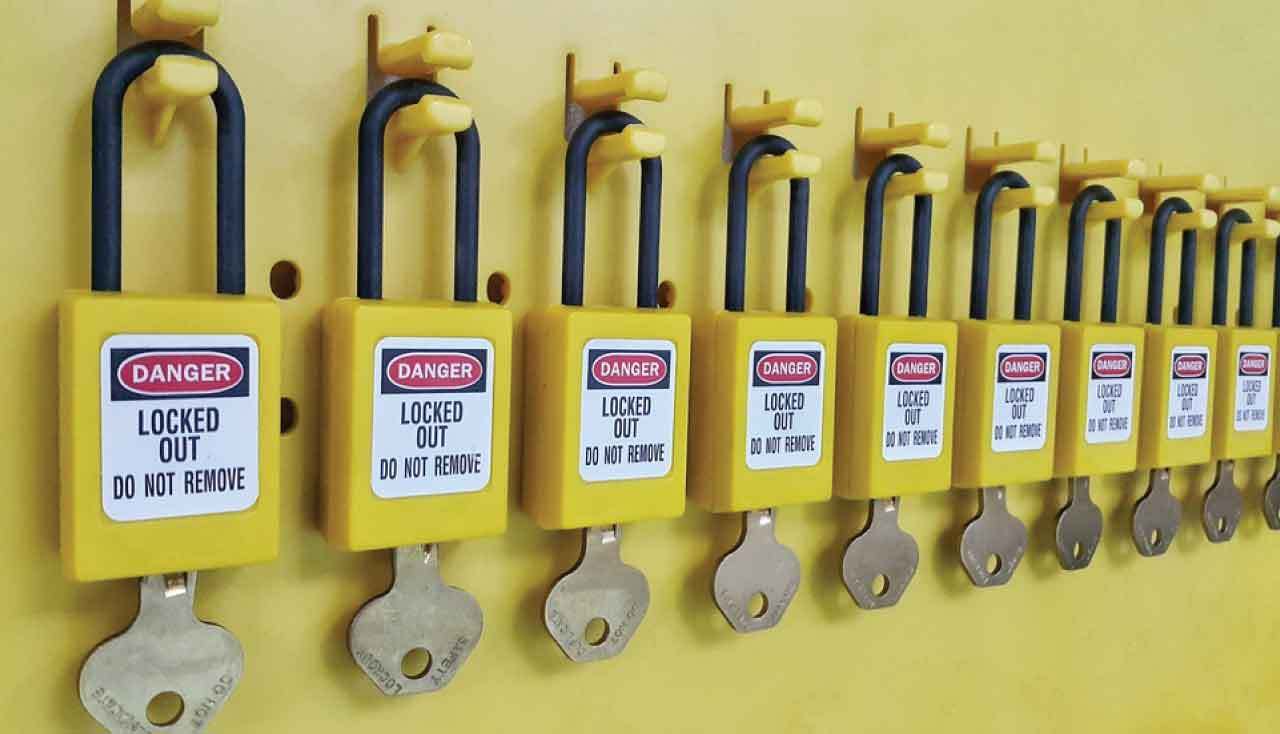Lockout/Tagout
A lockout/tagout procedure should include the following six steps:
- Preparation
- Shutdown
- Isolation
- Lockout/tagout
- Stored energy check
- Isolation verification
Let’s look at each of these steps of LOTO safety more closely in the sections below.
Lockout/Tagout Step 1: Preparation
The first step of locking and tagging out equipment for service and maintenance is to prepare.
During the preparation phase, the authorized employee must investigate and gain a complete understanding of all types of hazardous energy that might be controlled. In addition, it’s important to identify the specific hazards and of course, means for controlling that energy.
Use this Guide to Types of Hazardous Energy to investigate this issue more fully.
Lockout/Tagout Step 2: Shut Down
With planning complete, the actual process of powering down and locking out machines begins.
At this point, it’s time to shut down the machine or equipment that will be serviced or maintained.
Another important part of this step is to inform any employee affected by the shutdown, even if they won’t play a role in the service or maintenance.
Lockout/Tagout Step 3: Isolation
The next step of the lockout/tagout procedure is to isolate the machine or equipment from any source of energy.
This may mean any number of things, such as turning off power at a breaker or shutting a valve.
Lockout/Tagout Step 4: Lockout/Tagout
With the machine or equipment isolated from its energy source the next step of lockout/tagout is to actually lock and tag out the machine. It’s fair to say that this entire six-step process takes its name from this step.
During this step, the authorized employee will attach lockout and/or tagout devices to each energy-isolating device.
The point is to apply the lockout device on the energy-isolating device in a way so it says in the “safe” position and cannot be moved to the unsafe position except by the person performing the lockout.
Tagout refers to applying a tag on the device as well. This tag includes the name of the person who performed the lockout and additional information.
Lockout/Tagout Step 5: Stored Energy Check
Even after the energy source has been disconnected, in step 3 of the lockout safety process, and the machine has been locked out, in step 4, that doesn’t entirely guarantee that there’s no hazardous energy still stored within the machine or that it’s safe to perform maintenance.
At this time, it’s important to look for any hazardous energy that’s been “stored” within the machine, or any “residual” energy. During this phase, any potentially hazardous stored or residual energy must be relieved, disconnected, restrained, or made non-hazardous in some other way.
Lockout/Tagout Step 6: Isolation Verification
This last step is all about making sure.
Yes, you’ve shut down the machines, isolated them from their source of power, locked them out, and checked for hazardous stored energy. But now’s the time to double-check that you did it all right and it’s now safe to work on the machine or equipment.
At this point, an authorized employee verifies the machine has been properly isolated and de-energized.
